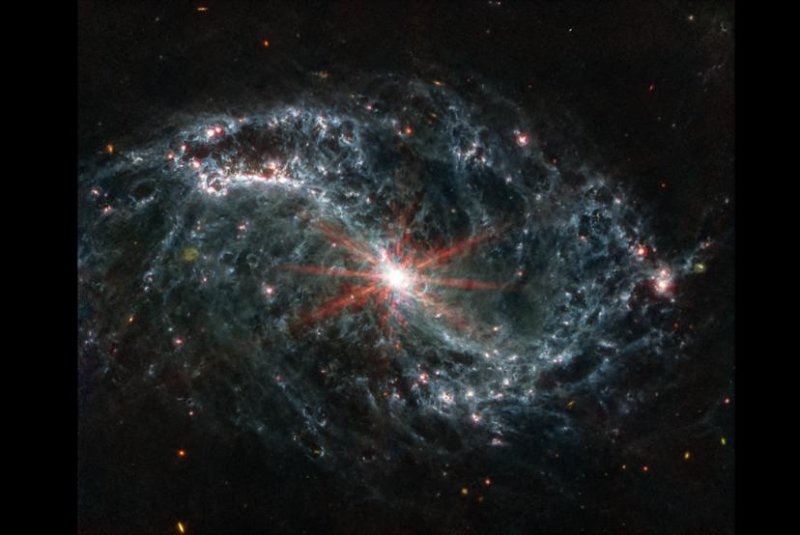1 of 3 | The spiral arms of NGC 7496 are filled with cavernous bubbles and shells overlapping one another in this image from MIRI. Image courtesy NASA, ESA, CSA, and J. Lee/UPI
Feb. 17 (UPI) -- NASA said on Thursday that scientists are getting a high-resolution view of nearby galaxies and their structures, thanks to the James Webb Space Telescope.
The telescope, which launched into space in 2021, created an infrared image that has allowed researchers to view large bubbles of gas that form stars and have released massive amounts of energy into their environments.
The high-resolution images have enabled an initial collection of 21 research papers which provided new insight into how some of the smallest-scale processes in the universe impact the evolution of galaxies.
"We are directly seeing how the energy from the formation of young stars affects the gas around them, and it's just remarkable," said Webb team member Erik Rosolowsky, of the University of Alberta, in Canada.
The team is examining 19 spiral galaxies, with Webb targeting five of them -- M74, NGC 7496, IC 5332, NGC 1365, and NGC 1433.
"The clarity with which we are seeing the fine structure certainly caught us by surprise," team member David Thilker, of Johns Hopkins University in Baltimore, said.
The Webb images found the presence of a network of highly structured features within probed galaxies, such as glowing cavities of dust and huge cavernous bubbles of gas that line the spiral arms.
In some regions of the nearby galaxies observed, this web of features appears built from both individual and overlapping shells and bubbles where young stars are releasing energy.
"Areas which are completely dark in Hubble imaging light up in exquisite detail in these new infrared images, allowing us to study how the dust in the interstellar medium has absorbed the light from forming stars and emitted it back out in the infrared, illuminating an intricate network of gas and dust," team member Karin Sandstrom, of the University of California, San Diego, said.















